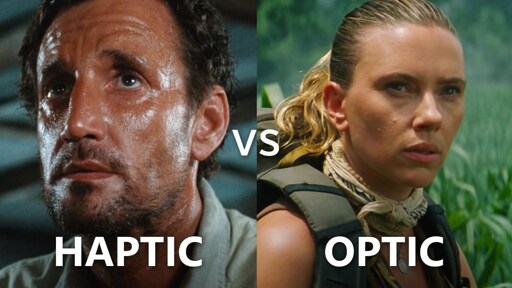- cross-posted to:
- movies@lemmy.world
- cross-posted to:
- movies@lemmy.world
A few comments that can give an idea what the video is about
Watched this earlier this morning and it was a great in depth video. It’s not digital vs film. Biggest complaints seem to be everything being shot with shallow depth of field, which is the current cinematic fashion.
Biggest issue though is everything being shot as evenly, and blandly, as possible to make it easier to change everything in post, rather than making sure everything looks as great as possible in camera.
”We’ll fix it in post” is the worst thing that happened to cinematography. Edit: Yeah not just that but the same mentality has been detrimental to all creative work.
Great watch and fully agree. Always blows my mind that Jurassic Park from 1993 looks so much better than the modern day Jurassic World films.



It’s disliked because it looks fake and jarring.
What exactly about it looks fake? What does your experience of the real world look more like a jerky 24fps film with motion blur, or a smoother 60 or higher FPS recording with less motion blur?
Jarring, yes. Because every time you sit down in a cinema, you see something at 24fps.
deleted by creator
That’s a lot of words to say something that’s not true. When you move your hand in front of your face it blurs, depending on what speed you move it at and how bright it is, but it doesn’t stutter across, only sampled about 24 times a second.
You can’t show the eye fast motion without it being blurred, because the eye interpolates what it sees over a few fractions of a second; motion blur is not something you need to have in the film print. If you shoot something at 24fps and again at 48, each with maximum shutter angle (or equivalent) two adjacent frames from the high framerate shot will together have the same apparent motion blur as one frame from the low one. But the amount of perceived stuttering and flickering is less.
deleted by creator
But stuttering motion is not natural, and is an inherent limitation of low framerates like 24fps.
As for focus, the pupil is a very small aperture compared to a film camera, so depth of field is usually much shallower in film and photography than in real life. Shallow depth of field is used artistically, not realistically, to try and get the viewer to look at what the filmmaker considers important.
deleted by creator
Next time you watch a film, look out for times when the camera is panning. Most pans are either really quick, so it’s just a complete incomprehensible blur, or really slow. Why nothing in between? Because you can see the stuttering effect. If you spot a faster pan, you will absolutely see it.
There is a rule of thumb in filmmaking that a pan should rotate the camera any faster than it takes to cover the width of the image in 7 seconds. This is because any faster than that, at 24 fps and with 180 degree shutter angle, stuttering (or juddering, or whatever you want to call it) because more apparent.
Now, focus your eyes on your finger and move it back and forth at a fast speed (such that you can still follow it with your eyes). Do you notice any stuttering in the background behind your finger? Of course not. Eyes don’t work like that.
deleted by creator